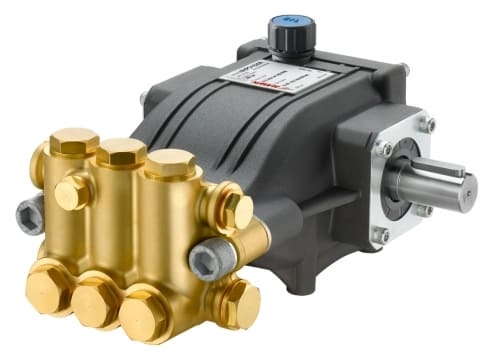
A guide to the NPSH of a pump
NPSH, which stands for Net Positive Suction Head, is an important parameter for the proper operation of industrial pumps, particularly piston pumps. Understanding and managing NPSH is critical to avoid problems such as cavitation, which can severely damage a pump and compromise the entire production process.
With this article, we at Hawk will give a comprehensive overview of pump NPSH, explaining what it is and why it is essential for the efficient and long-lasting operation of pumps.
What is the NPSH of a pump?
NPSH, or Net Positive Suction Head, is a measure of the pressure available in the suction system of a pump relative to the vapor pressure of the pumped liquid. In simple terms, it represents the amount of energy the liquid possesses at the pump inlet, which is necessary to prevent the formation of vapor bubbles that can cause cavitation.
NPSH is divided into two main components:
- NPSH available (NPSHa): is the actual pressure available at the pump inlet. It depends on the characteristics of the suction system, including tank height, pressure drop in the piping system, and atmospheric pressure.
- NPSH required (NPSHr): is the minimum pressure required by the pump to operate properly without cavitation.
Why is NPSH critical?
NPSH is an important parameter for the proper operation of pumps, and its importance lies mainly in the prevention of cavitation. Cavitation is a destructive phenomenon that occurs when the liquid pressure at the pump inlet falls below the vapor pressure of the liquid itself, causing vapor bubbles to form. This problem not only reduces pump efficiency, but can also cause premature failure, increasing maintenance costs and operational interruptions.
Keeping the NPSHa (available NPSH) above the NPSHr (required NPSH) is essential to ensure that the pump operates continuously and smoothly. Proper NPSH ensures that the pump can operate at its optimal capacity, improving system reliability and reducing the risk of unplanned downtime. In addition, properly managing the NPSH helps to extend pump life, safeguarding the investment and ensuring that the production process remains efficient and competitive. For these reasons, understanding and monitoring NPSH enables you to maintain high standards of operation and maintenance in your pumping installations.
Conclusion
In conclusion, NPSH is one of the parameters for selecting industrial pumps, especially piston pumps. Proper management of NPSH not only prevents harmful phenomena such as cavitation, but also helps maintain high operational efficiency, reducing the risk of failure and ensuring uninterrupted operation. Thorough understanding of NPSH enables optimizing pump performance, prolonging pump life and reducing costs associated with maintenance and downtime.
At Hawk, we understand the importance of NPSH; that's why we are committed to providing state-of-the-art piston pumps that provide maximum performance and reliability. Contact us now for more information!
Share this Article